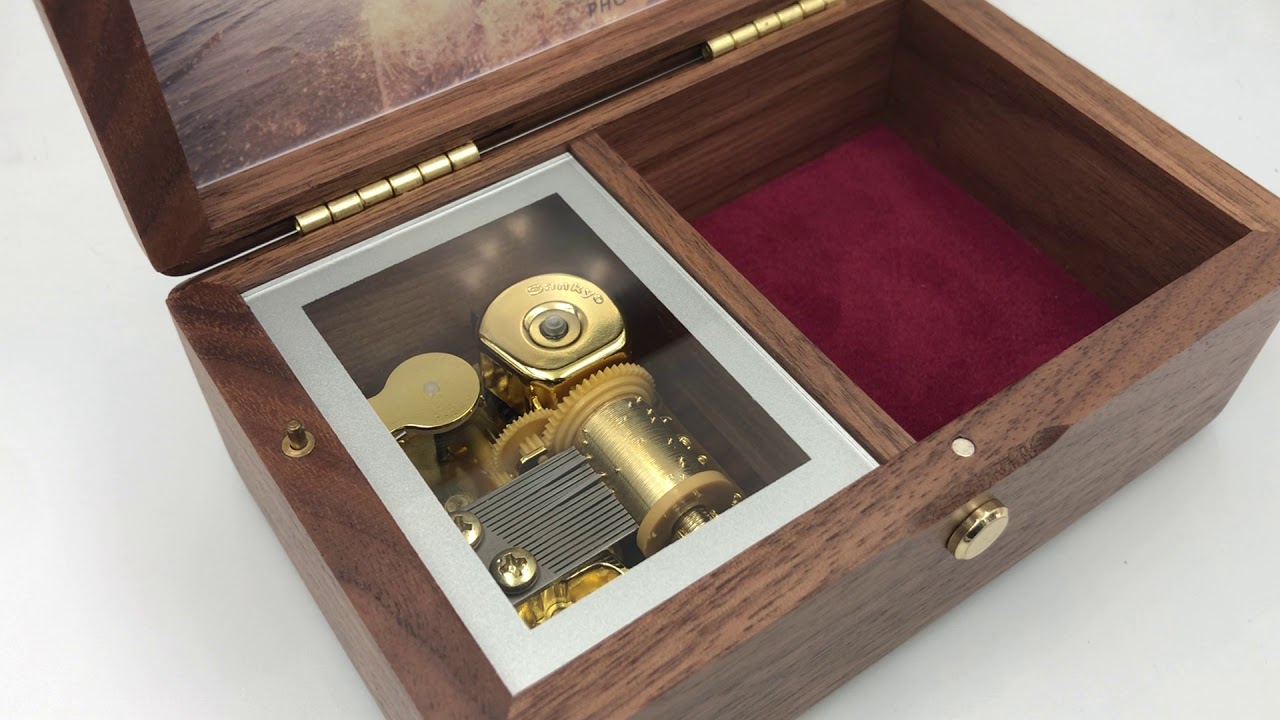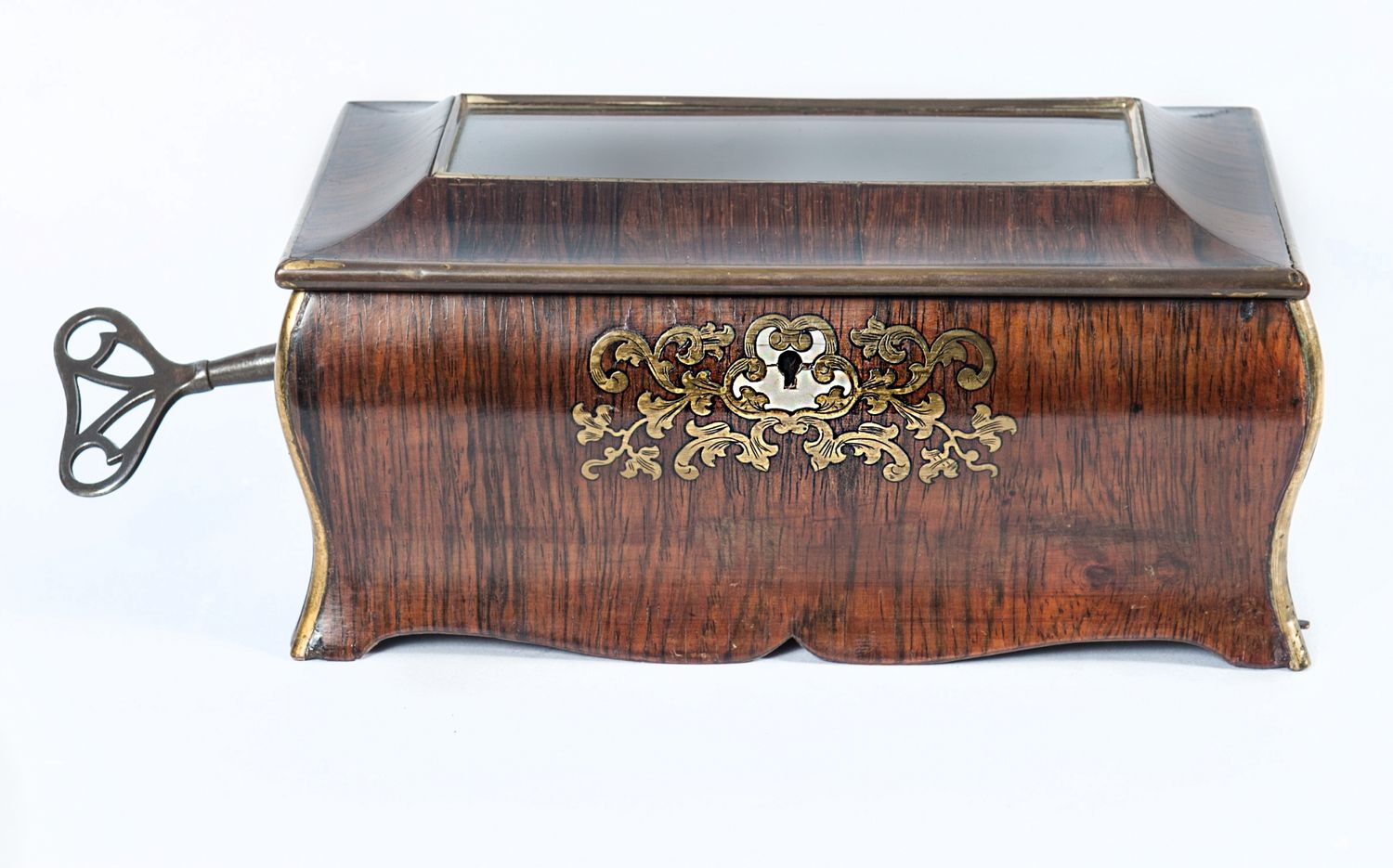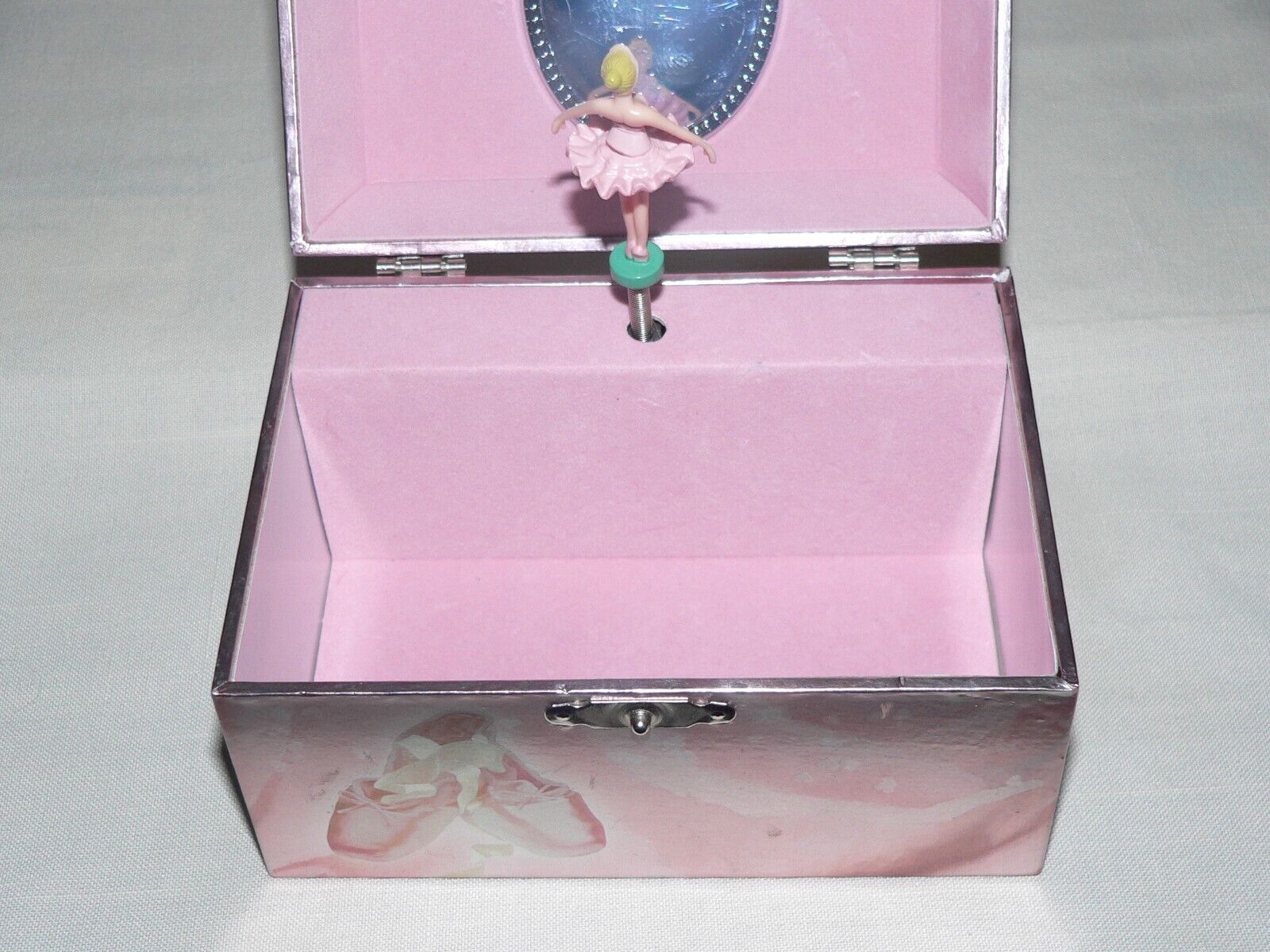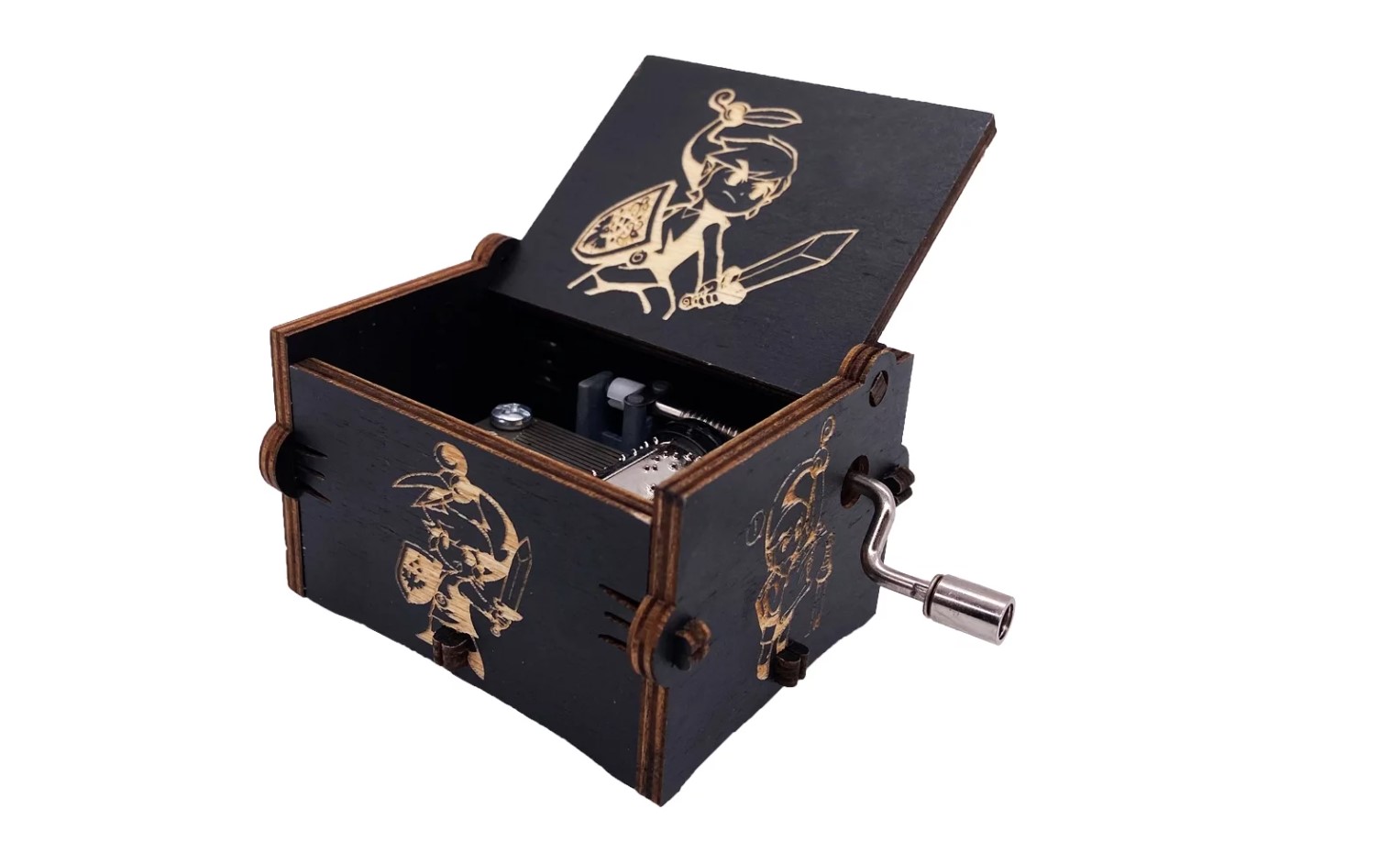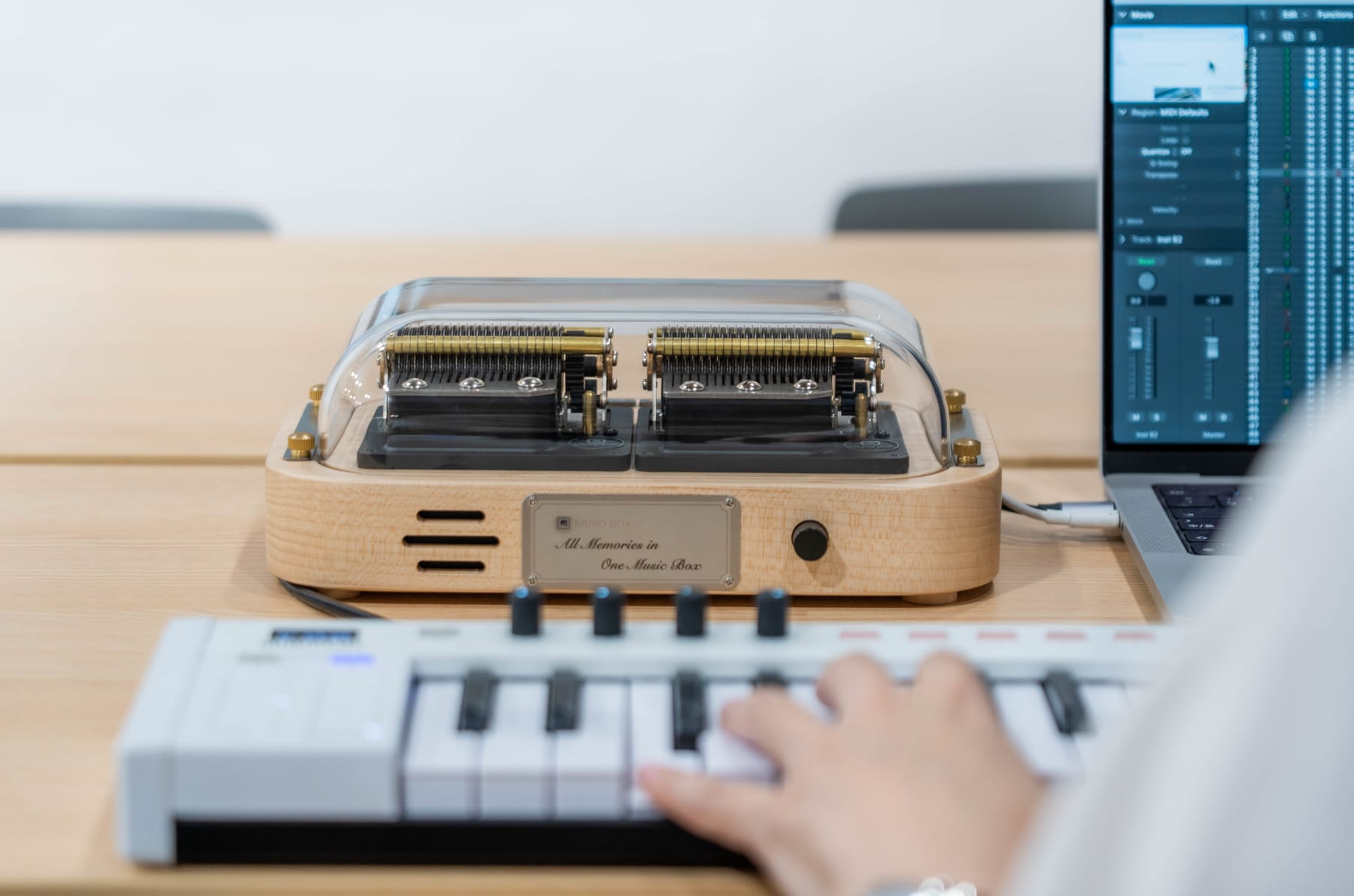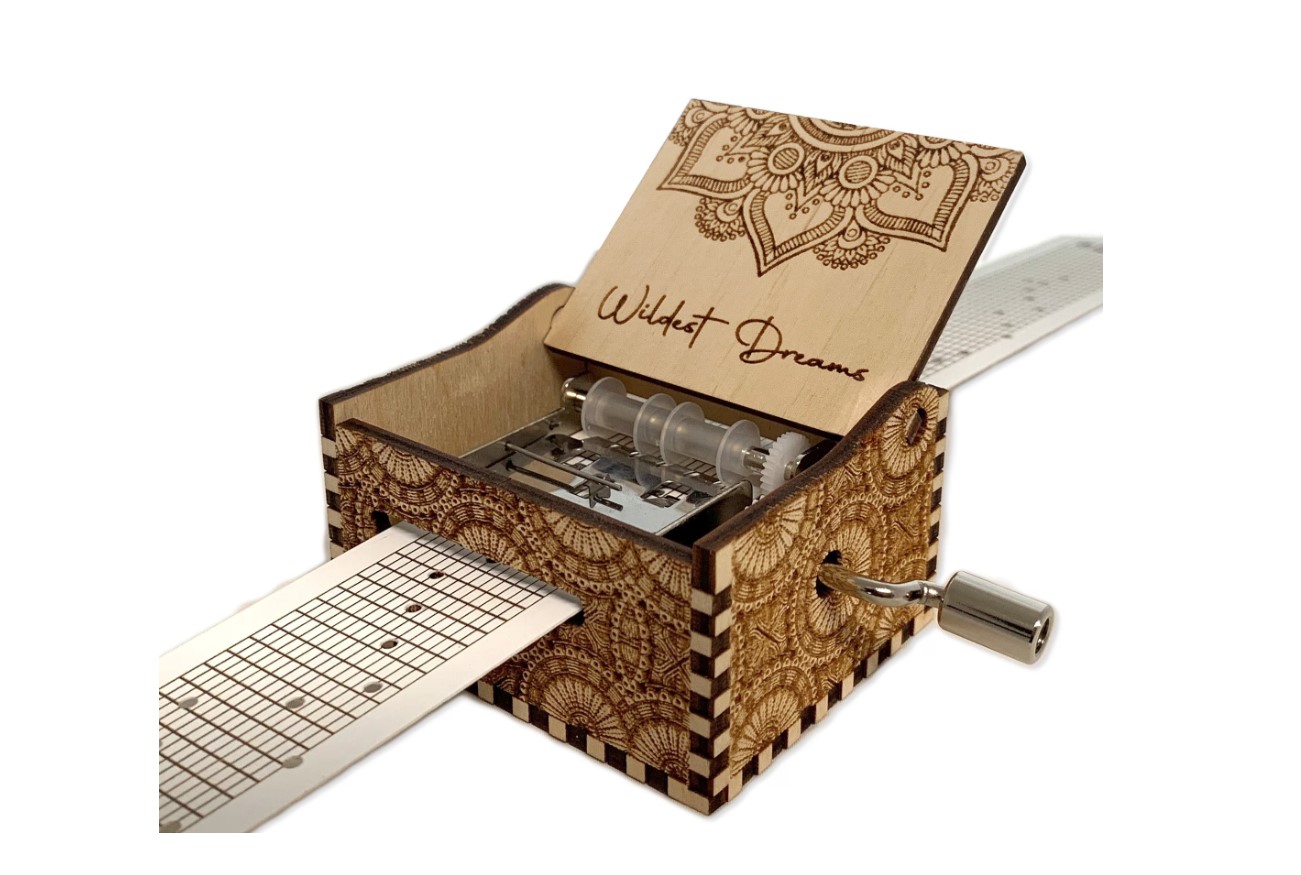Home>Devices & Equipment>Music Box>How Do I Record A Song For A Music Box
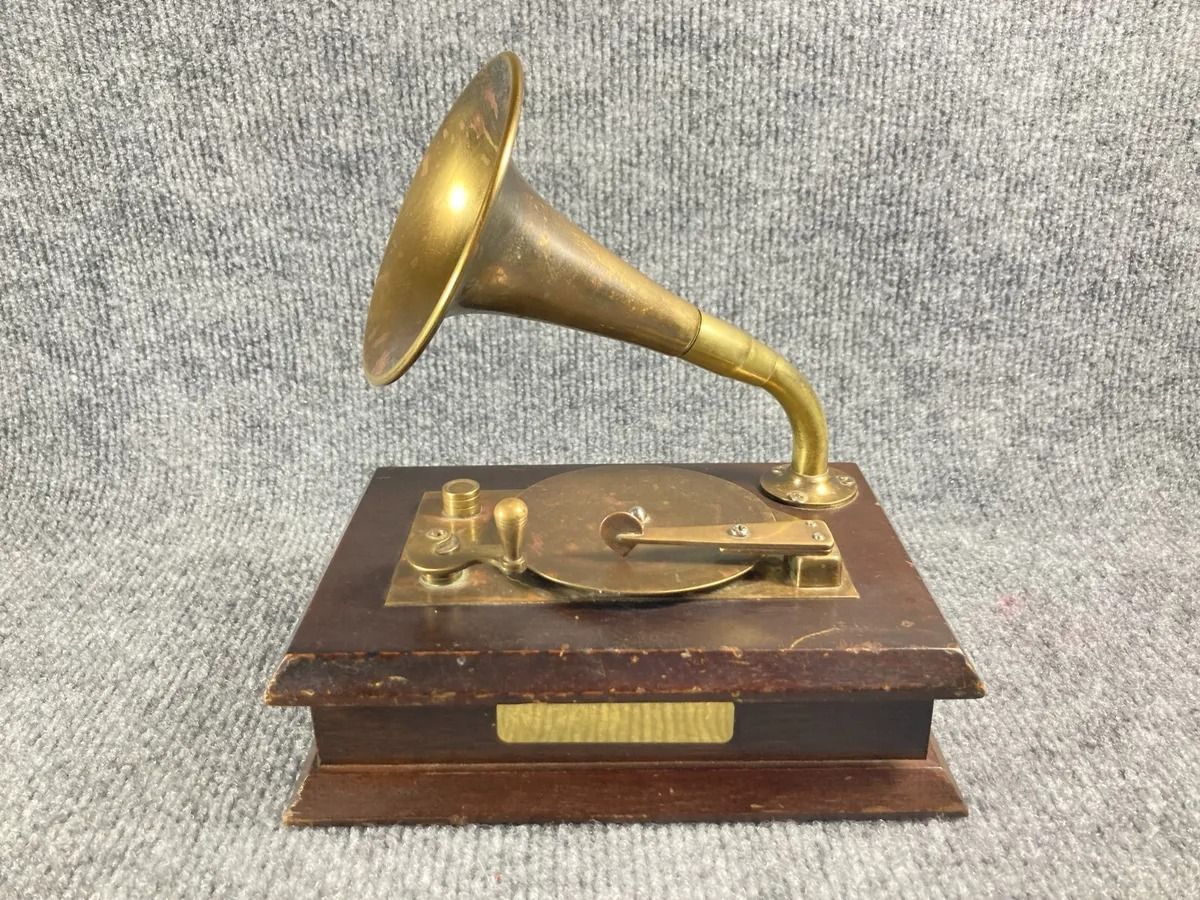

Music Box
How Do I Record A Song For A Music Box
Published: January 11, 2024
Learn how to record your own music box song with step-by-step instructions. Discover tips, techniques, and tools for creating beautiful melodies on your music box.
(Many of the links in this article redirect to a specific reviewed product. Your purchase of these products through affiliate links helps to generate commission for AudioLover.com, at no extra cost. Learn more)
Table of Contents
Introduction
Welcome to the enchanting world of music boxes, where delicate melodies fill the air and nostalgia takes hold. Whether you have a passion for collecting these mesmerizing pieces or simply want to create a unique gift for a loved one, recording a song for a music box is a wonderful way to bring a melody to life.
In this article, we will guide you through the step-by-step process of recording a song for a music box. From choosing the perfect song to troubleshooting common issues, we will cover everything you need to know to create a beautiful and lasting musical treasure.
Recording a song for a music box may seem like a complex task, but with the right approach and a bit of creativity, it can be an incredibly rewarding experience. Whether you are a musician or have little to no musical experience, this guide will provide you with the knowledge and techniques to bring your chosen song to life in the enchanting world of music boxes.
So, if you have a song in mind that holds a special place in your heart, or if you’re looking to explore the world of music box melodies, let’s embark on this journey together and discover how to record a song for a music box.
Step 1: Choosing the Song
The first step in recording a song for a music box is selecting the perfect melody. The song you choose should resonate with you and evoke the emotions and memories you want to capture in the music box.
Consider your personal preferences and the intended recipient of the music box. Are you looking for a romantic tune, a lullaby, or a cheerful song to bring a smile to someone’s face? Take your time to explore different genres and styles until you find a song that truly speaks to you.
Keep in mind that music boxes have limited note ranges and simpler mechanisms compared to other musical instruments. Therefore, it’s important to select a song that isn’t too complex or intricate. Songs that have a clear melody and simple chord progressions tend to work best for music boxes.
If you’re not sure where to start, traditional tunes like “Twinkle Twinkle Little Star,” “Amazing Grace,” or “Fur Elise” are popular choices for music boxes. Alternatively, you can also choose a well-known song from a favorite movie or a beloved classical piece.
Once you’ve identified a few potential songs, listen to them carefully and imagine how they would sound as a delicate melody playing from a music box. Consider the tempo, the overall mood, and whether the song lends itself well to a music box arrangement.
In this first step, take your time to explore different songs, experiment with different genres and styles, and ultimately choose a song that both resonates with you and is suitable for a music box.
Step 2: Writing the Music
Once you have chosen the perfect song, it’s time to begin the process of transcribing and arranging the music for the music box. Even if you’re not a skilled musician, with a little patience and creativity, you can create a beautiful music box arrangement.
Begin by listening to the original song and familiarizing yourself with the melody, chord progressions, and overall structure. This will help you understand the song’s musical elements and how to adapt them for a music box.
Next, determine the key in which you want to arrange the song. Music boxes typically have a limited range of notes, so you may need to transpose the song to fit within the capabilities of your music box. Choose a key that allows for the melody to be comfortably played on the music box’s range of notes.
Once you have the key determined, start transcribing the melody from the original song. Focus on capturing the essence of the melody and simplifying it to fit within the limited note range of the music box. Remove any complex ornaments or embellishments, and keep the melody clear and easily recognizable.
If the song has lyrics, you can choose to omit them or adapt them into a simplified vocal melody. This will add an extra layer of charm to your music box arrangement.
In addition to the melody, consider the accompaniment or chords used in the original song. Simplify and adapt the chord progressions to fit within the constraints of the music box. Remember, simplicity is key in creating a music box arrangement.
Don’t be afraid to experiment and make changes to the original song as you write the music for the music box. Your goal is to create a version that sounds beautiful and enchanting when played on a music box.
Finally, write down the music notes for your arrangement. You can use sheet music, tablature, or even a digital audio workstation to notate the melody and accompaniment. This will serve as a reference when recording the song for the music box.
In this step, take your time to transcribe and adapt the chosen song into a music box arrangement. Keep the melody simple yet captivating, and make any necessary adjustments to fit within the limits of the music box. The result will be a unique rendition of the song that is perfect for a music box.
Step 3: Transcribing the Music
Transcribing the music is a crucial step in preparing your chosen song for the music box. This process involves converting your written arrangement into a format that can be played on the music box. While it may seem intimidating, with a bit of patience and attention to detail, you can successfully transcribe the music for your music box.
Start by gathering the necessary materials, including sheet music or your written arrangement, a pencil, and a music box transcribing device, if available. A music box transcribing device is a specialized tool that helps you determine the note placement on the music box cylinder or disc.
Begin by identifying the notes in your arrangement and determining their corresponding positions on the music box. If you don’t have a transcribing device, you can use trial and error or refer to the music box’s instruction manual for guidance.
As you transcribe the music, pay attention to the rhythm and timing of the arrangement. Music boxes operate at a fixed tempo, so you may need to adjust the rhythm to ensure a smooth and cohesive melody. Experiment with note durations and rests to achieve the desired timing.
If your music box has interchangeable cylinders or discs, make sure to align the notes correctly with the pins or metal teeth. Take note of any markings or indicators on the music box’s cylinder or disc holder to guide your transcribing process.
Throughout the transcription process, regularly test your transcribed music on the music box to ensure accuracy. Make any necessary adjustments, such as repositioning notes or altering the arrangement, to achieve the desired sound.
Remember, transcribing the music for a music box requires precision and attention to detail. Take your time and be patient, as it may take several iterations to perfect your transcription. The result will be a beautifully transcribed arrangement that is ready for recording on the music box.
In this step, focus on transcribing your written arrangement onto the music box. Pay attention to note placement, rhythm, and timing, and make any necessary adjustments along the way. With practice and perseverance, you will successfully transcribe the music and bring it to life on the music box.
Step 4: Preparing the Music Box
Before you can record the song on your music box, it’s important to properly prepare the music box to ensure optimal sound and performance. This step involves cleaning and inspecting the music box, as well as making any necessary adjustments to enhance the overall quality of the sound.
Start by gently cleaning the music box, removing any dust or debris that may have accumulated over time. Use a soft cloth or brush to wipe the exterior, paying attention to intricate details and delicate embellishments. Avoid using harsh chemicals or abrasive materials that could damage the finish or mechanism of the music box.
Next, inspect the internal components of the music box. Check for any loose or worn parts, such as springs or gears, that may affect the functionality of the music box. If necessary, consult the music box’s instruction manual or seek professional assistance to repair or replace any faulty components.
Once the music box is clean and in good working condition, it’s time to prepare the melody mechanism. Depending on the type of music box you have, this may involve swapping out the music box cylinder or disc with the appropriate one for your transcribed arrangement. Follow the instructions provided with your music box to ensure the correct installation.
If your music box allows for customization, you may have the option to adjust the volume or speed of the melody. Experiment with these settings to find the optimal sound for your recording. Keep in mind that music boxes typically have a delicate and soft sound, so adjust the volume and speed accordingly to achieve the desired effect.
Lastly, make sure the music box is placed on a stable surface where it can be securely held or mounted during the recording process. This will ensure that the music box remains in place and allows for accurate playback of the transcribed arrangement.
By properly preparing the music box, you are setting the stage for a successful recording. Take the time to clean, inspect, and adjust the music box to ensure it is in optimal condition for capturing the magic of your chosen song.
In this step, focus on cleaning and inspecting the music box, as well as preparing the melody mechanism and making any necessary adjustments. By properly preparing the music box, you’ll ensure that it is in the best condition to record and produce a beautiful rendition of the chosen song.
Step 5: Recording the Song
With the music box prepared and your transcribed arrangement in hand, it’s time to record the song onto the music box. This step allows you to capture the melodies you have worked so hard to create and bring them to life in the enchanting sound of the music box.
First, position yourself in a quiet and controlled environment where you can focus on the recording process. Eliminate any background noise or distractions that may interfere with the clarity of the recording.
Next, carefully place the transcribed music onto the music box’s cylinder or disc, ensuring that the notes align with the pins or metal teeth. Make any necessary adjustments to ensure the accurate playback of the melody.
Take a moment to prepare yourself mentally and emotionally for the recording. Connect with the song’s melody and bring your passion and emotion into your performance. Remember, the beauty of music box melodies lies in their simplicity and heartfelt expression.
Once you are ready, activate the music box’s mechanism and let the music box play the transcribed arrangement. As the melody gently flows from the music box, listen carefully to ensure the accuracy and quality of the recording.
If you notice any inconsistencies or errors in the playback, stop the music box and make the necessary adjustments to the music arrangement or the positioning of the notes. Repeat the recording process until you are satisfied with the result.
Consider recording the song multiple times to capture different renditions and variations. This will allow you to choose the best recording that truly captures the essence of the melody and showcases the magic of the music box.
During the recording process, be patient and take your time. It may take several attempts to achieve the desired outcome. Stay focused, enjoy the beauty of the music, and let your recording reflect the emotions and memories you aimed to evoke from the chosen song.
In this step, your main focus is to record the transcribed arrangement onto the music box. Be present, connect with the melodies, and strive for a recording that accurately reflects the beauty and essence of the chosen song when played on the music box.
Step 6: Finalizing the Recording
After recording the song onto the music box, you’ll want to take the time to finalize the recording and ensure its optimal quality. This step involves reviewing the recorded melody, making any necessary adjustments, and fine-tuning the sound to achieve the best possible result.
First, listen to the recorded melody carefully. Pay attention to the overall sound quality, clarity of the notes, and any inconsistencies or imperfections that may have been captured during the recording process.
If you notice any errors or discrepancies in the recorded melody, such as missed notes or timing issues, carefully analyze the transcribed arrangement and make the necessary corrections. Once the adjustments have been made, record the melody again and compare it to the previous version.
Continuously evaluate and fine-tune the recording, making incremental changes until you are satisfied with the result. Keep in mind that perfection may be elusive, but strive to achieve the best possible rendition of the song on the music box.
When reviewing the recording, pay attention to the volume and balance of the melody. Adjust the volume settings on the music box, or use external audio editing software if available, to find the optimum level that matches the desired sound and atmosphere.
Additionally, consider adding subtle embellishments or ornaments to enhance the recording. Music boxes have a charming and whimsical character that can be further elevated with delicate trills or grace notes. Experiment and explore ways to add your personal touch to the recorded melody.
Once you are satisfied with the final recording, give it a listen from start to finish. Ensure that the transitions between notes and sections are smooth and seamless. Pay attention to the overall flow and emotional impact of the melody.
Remember, this finalization step is about refining the recording and making it the best representation of the chosen song on the music box. Be patient, trust your ears, and make the necessary adjustments to create a truly enchanting and captivating musical experience.
In this step, focus on reviewing and finalizing the recorded melody. Make any necessary adjustments, refine the sound quality, and add subtle embellishments to enhance the overall recording. Strive for a memorable and captivating rendition that truly represents the beauty of the chosen song on the music box.
Step 7: Testing the Music Box
Once you have finalized the recording, it’s time to test the music box and ensure that it plays the melody accurately and beautifully. This step allows you to evaluate the final result and make any last-minute adjustments before sharing the music box with others or keeping it as a cherished keepsake.
To begin, carefully wind up the music box, ensuring that the mechanism is fully engaged and ready to play the recorded melody. Place the music box on a stable surface and activate the mechanism.
Listen attentively to the music as it fills the air. Pay close attention to the accuracy and clarity of the notes, ensuring that they align with your transcribed arrangement. If you notice any discrepancies or issues with the playback, stop the music box and investigate the cause.
Check for any mechanical malfunctions or misalignments within the music box mechanism. Ensure that the pins or metal teeth on the cylinder or disc are properly striking the corresponding notes to produce the desired sound.
If there are any inconsistencies or errors in the playback, make the necessary adjustments to the music box mechanism or the positioning of the notes on the cylinder or disc. Continuously test and fine-tune the playback until you achieve the desired result.
Throughout the testing process, pay attention to the volume and balance of the melody. If necessary, adjust the volume settings on the music box or use external techniques such as placing a soft cloth or adjusting the resonator to achieve the desired sound quality.
As you listen to the music box, also consider the overall ambiance and atmosphere it creates. Feel the emotions and memories that the melody evokes and assess whether it resonates with your original intention for the chosen song.
Don’t be afraid to test the music box in different environments or with different listeners to gain different perspectives. Their feedback can help you further refine the performance and ensure its enchanting quality.
By thoroughly testing the music box, you can ensure that the recorded melody truly shines and creates a captivating and nostalgic experience. Make any necessary adjustments and enjoy the fulfillment of successfully bringing your chosen song to life on the music box.
In this step, focus on testing the music box to ensure accurate and beautiful playback of the recorded melody. Fine-tune the mechanism, adjust the volume, and consider the overall ambiance and atmosphere created by the music box. Take the time to achieve the best possible result before sharing or cherishing your mesmerizing musical treasure.
Step 8: Troubleshooting Common Issues
While recording and testing the music box, it’s not uncommon to encounter some common issues that may affect the performance or sound quality. This troubleshooting step aims to help you identify and address these issues to ensure the optimal functioning of the music box.
If you notice that certain notes are not playing or are producing a muffled sound, it could indicate a mechanical problem with the music box. Carefully examine the mechanism, looking for any obstructions or misalignments that may be preventing the proper striking of the notes. Gently adjust or clean the affected area to resolve the issue.
In some cases, the melody may sound out of tune or off-pitch. This can result from the music box’s mechanisms becoming loose over time. Check for any loose screws or connections within the music box and tighten them as needed. Additionally, ensure that the tuning pegs or plates are properly aligned for accurate pitch.
If you find that the melody is playing too fast or too slow, it may indicate an issue with the music box’s mechanical movement. Check for any worn or damaged gears that may be affecting the speed regulation. Lubricate the moving parts with a suitable lubricant to smoothen the operation and improve the timing of the playback.
Sometimes, the music box may produce a distorted or scratchy sound. This can be due to dust or dirt accumulating on the music box’s internal components. Gently clean the inside of the music box with a soft brush or compressed air to remove any debris that may be affecting the sound quality.
If you are still experiencing issues with the music box’s sound quality or performance, consult the manufacturer’s instruction manual or seek professional assistance. They can provide specific guidance and troubleshoot any intricate problems that may arise.
Remember, troubleshooting common issues is an integral part of maintaining the longevity and optimal functioning of your music box. By addressing and resolving any problems, you can ensure a delightful and flawless musical experience for yourself and others.
In this final step, focus on identifying and troubleshooting any common issues that may arise with the music box. Address mechanical problems, check for loose connections, and clean the music box to improve sound quality and performance. Seek expert guidance if needed to ensure a seamless and harmonious music box experience.
Conclusion
Recording a song for a music box is a captivating and rewarding journey that allows you to bring the magic of melodies to life. It combines creativity, musicality, and craftsmanship to create a unique and cherished musical treasure. By following the steps outlined in this guide, you can embark on this delightful endeavor with confidence and joy.
From choosing the perfect song to transcribing and recording the melody, each step in the process plays a vital role in creating a captivating music box experience. Take the time to explore different songs, adapt them to fit within the constraints of the music box, and refine the arrangement for optimal sound quality.
The process of recording a song for a music box requires attention to detail, patience, and a deep appreciation for the beauty of simplicity. It is in the gentle and delicate notes of the music box that the true enchantment lies.
Throughout the journey, troubleshoot any common issues that may arise and ensure that the music box is in optimal condition for recording and playback. By doing so, you can create a mesmerizing musical experience that resonates with the emotions and memories you wish to evoke.
Whether you’re creating a music box as a gift for a loved one or indulging in your own passion for music, the result will be a cherished and timeless piece that brings joy and nostalgia for years to come.
So, embrace the beauty of music boxes, let your creativity soar, and embark on the magical journey of recording a song for a music box. Let the melodies whisper their captivating tunes to your heart and fill your world with the sweet sound of enchantment.

